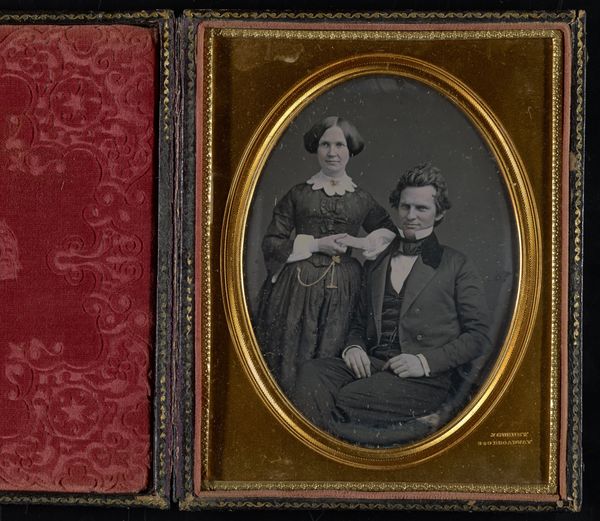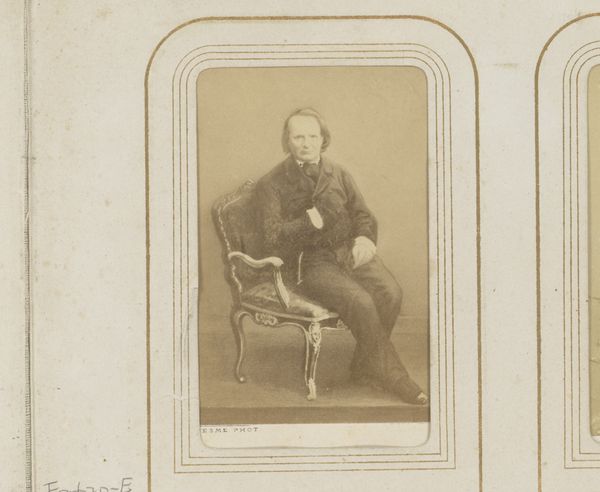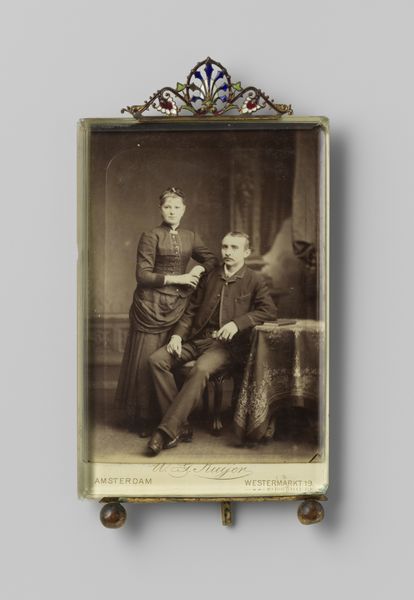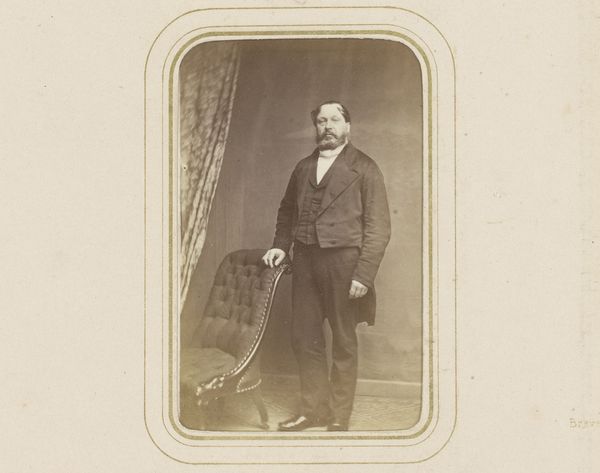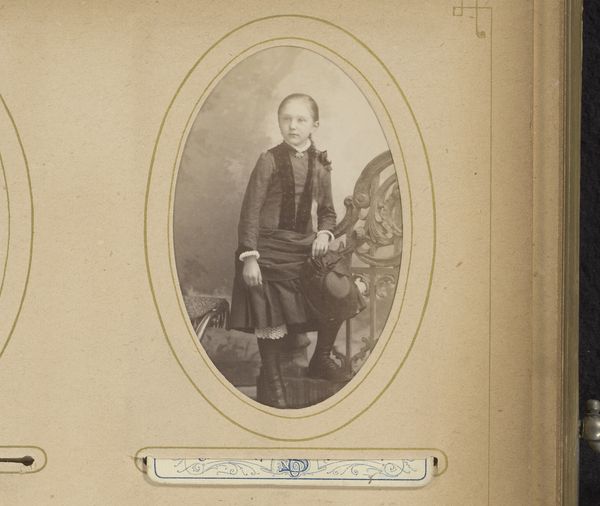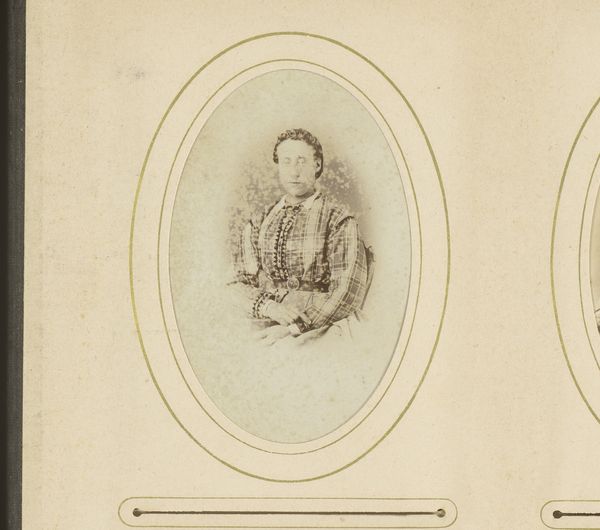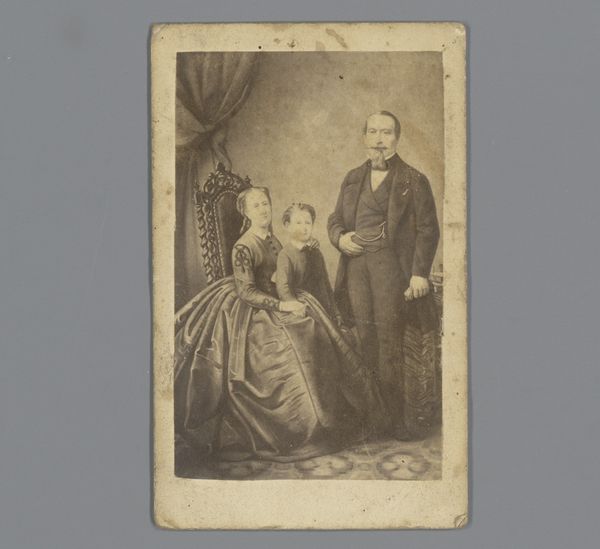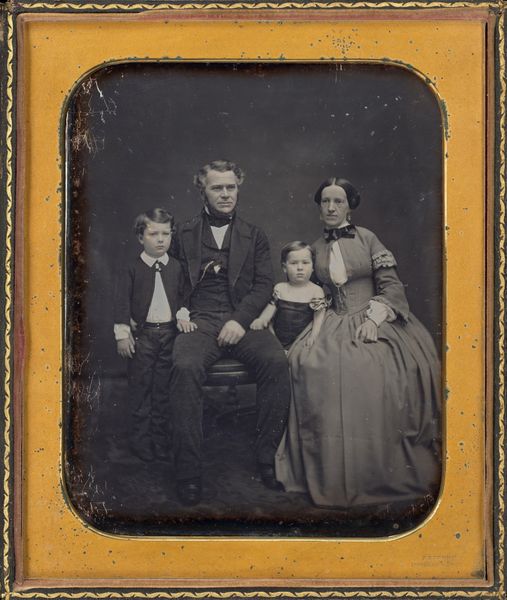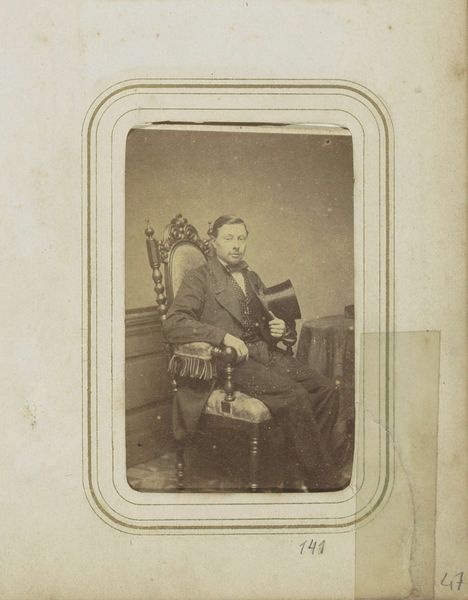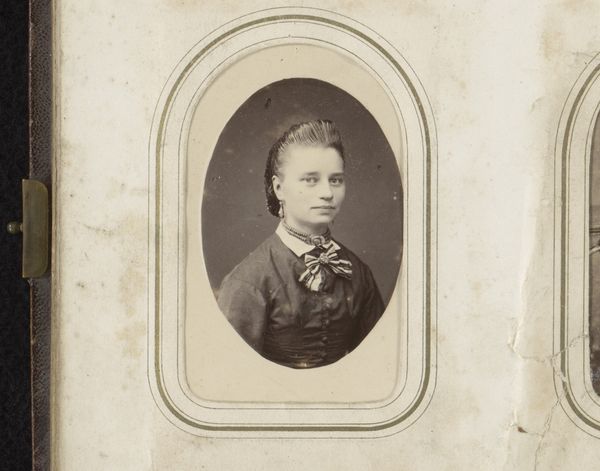
daguerreotype, photography
#
portrait
#
16_19th-century
#
daguerreotype
#
photography
#
men
#
united-states
#
italian-renaissance
Dimensions: 11 × 14 cm (4 1/4 × 5 1/2 in., plate); 15.1 × 24.2 × 1 cm (open case); 15.1 × 12.1 × 2.1 cm (case)
Copyright: Public Domain
Curator: Here we have an untitled portrait of a man alongside a painting, created by Jeremiah Gurney around 1856. It's a daguerreotype, currently held at the Art Institute of Chicago. Editor: There's an intriguing stillness about this piece. The sitter looks rather solemn, posed next to, seemingly, an image of himself, as if reflecting on his own self-image, both in life and how he wishes to be perceived. Curator: Absolutely, the process of creating a daguerreotype involved meticulous chemical processes on a silvered copper plate. Each image was unique and required great care and time, indicating a certain value placed on image creation at this historical moment. Also, observe the elaborate details of the frame; clearly this wasn't a casual snapshot but a consciously crafted representation intended for display. Editor: It does beg the question, doesn’t it, about representation and class in 19th-century America? Who has access to having their image rendered? And more than that, rendered *twice*, which suggests wealth but also speaks to something about how masculinity might be performed, too—through commissioning portraits, literally framing oneself in the public eye. Curator: The inclusion of the painting, which seems inspired by Italian Renaissance portraiture, is quite fascinating, signaling perhaps the sitter's artistic aspirations, his patronage, or maybe just a taste for 'high' culture. It challenges assumptions about craft versus art, suggesting a melding of artistic traditions via modern photographic technology. Editor: I see a commentary, too, on how new technologies were rapidly changing how people related to themselves. This isn't merely a straightforward depiction but rather something about layering the old portrait style within the new medium of the time, of photography. Was it democratic, or did these technologies re-entrench the existing lines of power and ways of viewing? Curator: A superb question! To delve deeper into the manufacturing process itself—how the materials are sourced and prepared—helps unravel socio-economic entanglements around photography. It also allows a reading into accessibility and distribution as time progresses. Editor: Precisely, which allows the dialogue to stay expansive! Seeing the portrait also reveals some deeper unease of the self and societal dynamics. We're invited to think beyond mere likeness and question social narratives of image making in that particular context of time. Curator: Indeed! It really captures the evolving relationship with materiality and image in nineteenth century America. Editor: Right— it makes us consider the portrait in broader socio-cultural frames, offering a peek into some rather profound issues and tensions within its own quiet, captivating way.
Comments
No comments
Be the first to comment and join the conversation on the ultimate creative platform.
